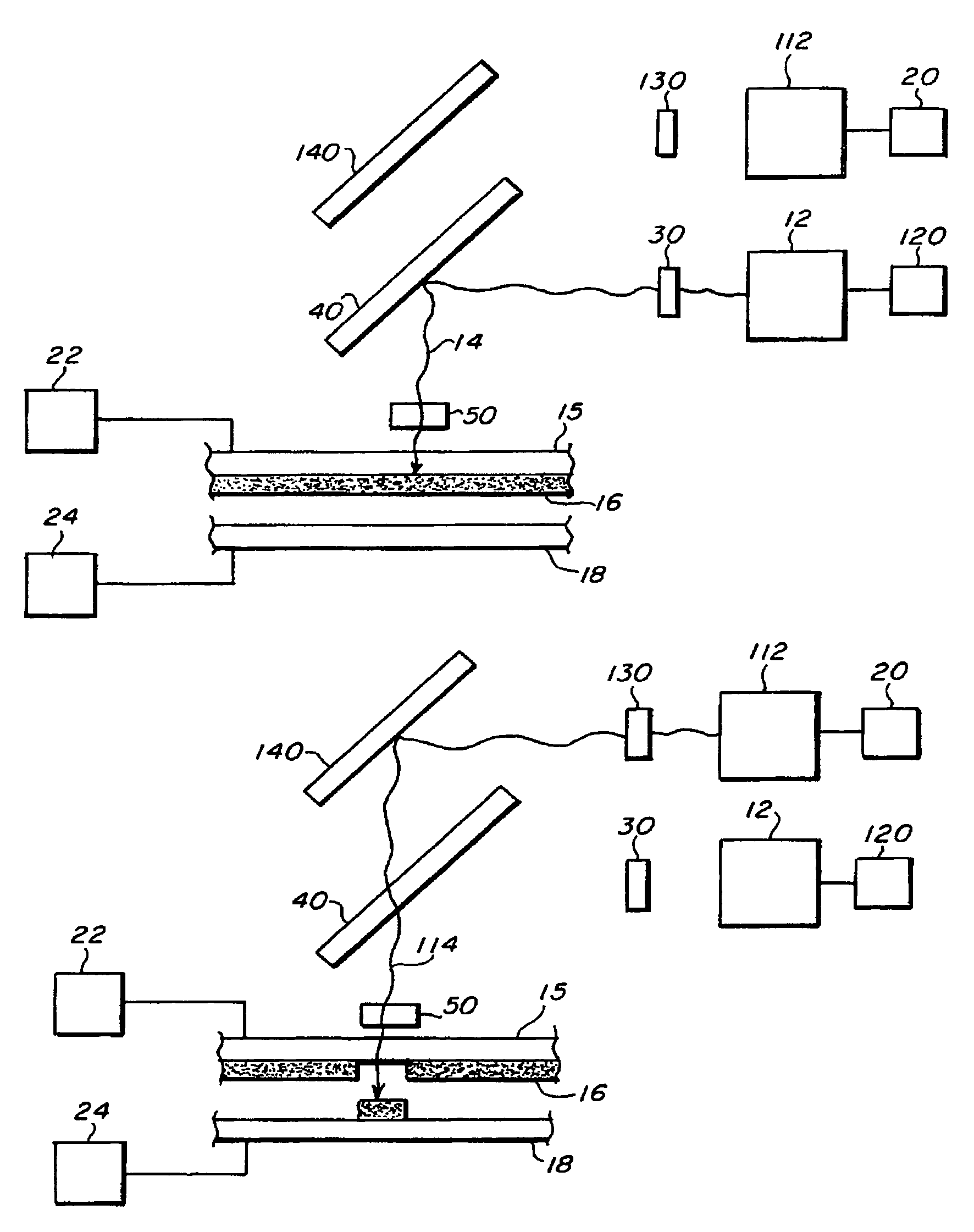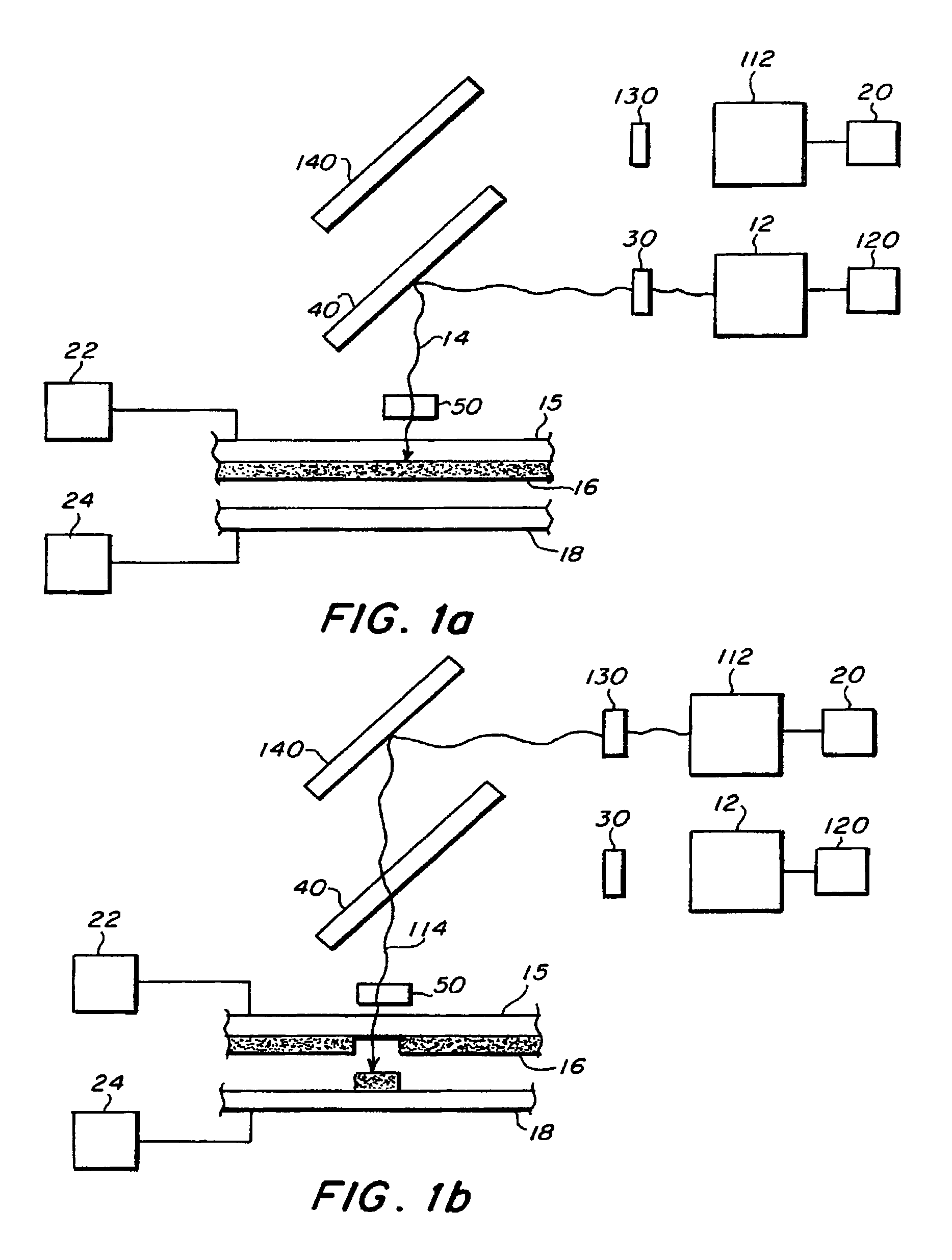Direct-write laser transfer and processing
a laser transfer and laser technology, applied in the field of material deposition, can solve the problems of inability to adapt to large-scale rapid prototyping, limit the flexibility and capability of these approaches, and wet techniques are inherently limited by viscoelastic properties
- Summary
- Abstract
- Description
- Claims
- Application Information
AI Technical Summary
Benefits of technology
Problems solved by technology
Method used
Image
Examples
example 2
Laser Transfer and Processing of Barium Titanate (BaTiO3)
[0055]Using a method similar to that described in example 1), the ferroelectric material BaTiO3 (BTO) was transferred to interdigitated capacitor structures on an MgO substrate.
[0056]The receiving substrate has interdigitated capacitors of various finger lengths and gap spacings patterned on a (500 Å)Au / (1.5 μm)Ag / (500 Å)Cr coating on an MgO substrate. The target substrate consisted of a mixture of BTO powders in a precursor agent comprising barium neodecanoate and dimethoxy titanium dineodecanaoate deposited as a layer on one side of a UV-grade fused silica disk.
[0057]The UV transfer laser wavelength was 248 nm and the focal laser fluence on the target substrate was 0.3 J / cm2. The focal spot size was 40 microns in diameter. The UV laser operated at 1 Hz and the target substrate was moved after every laser shot to expose a fresh area of the BTO coating. (A 25-micron spacer was used between the target and receiving substrates)....
PUM
| Property | Measurement | Unit |
|---|---|---|
| temperature | aaaaa | aaaaa |
| temperature | aaaaa | aaaaa |
| thick | aaaaa | aaaaa |
Abstract
Description
Claims
Application Information
 Login to View More
Login to View More - R&D
- Intellectual Property
- Life Sciences
- Materials
- Tech Scout
- Unparalleled Data Quality
- Higher Quality Content
- 60% Fewer Hallucinations
Browse by: Latest US Patents, China's latest patents, Technical Efficacy Thesaurus, Application Domain, Technology Topic, Popular Technical Reports.
© 2025 PatSnap. All rights reserved.Legal|Privacy policy|Modern Slavery Act Transparency Statement|Sitemap|About US| Contact US: help@patsnap.com


